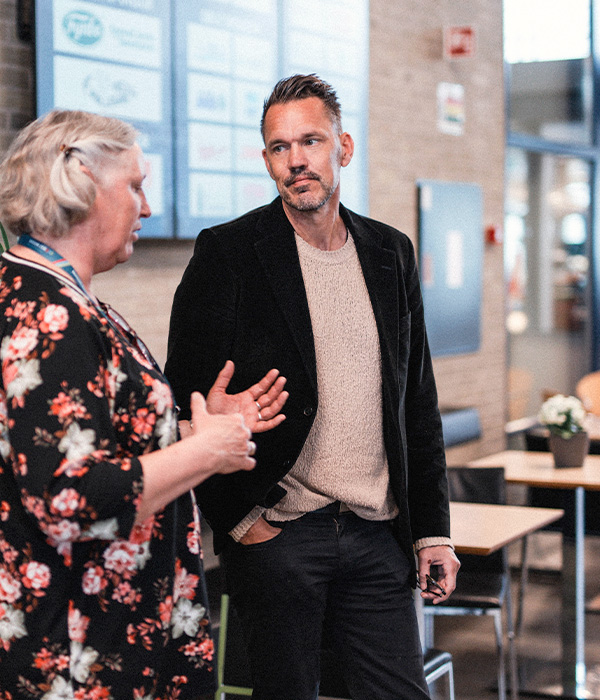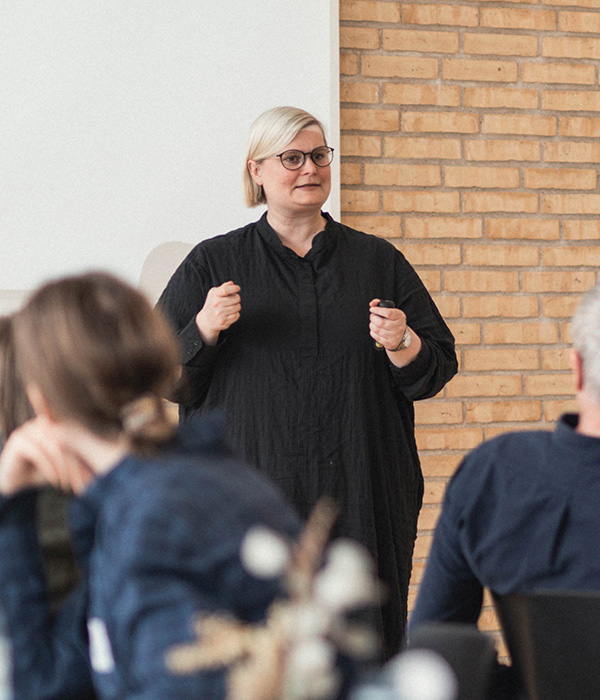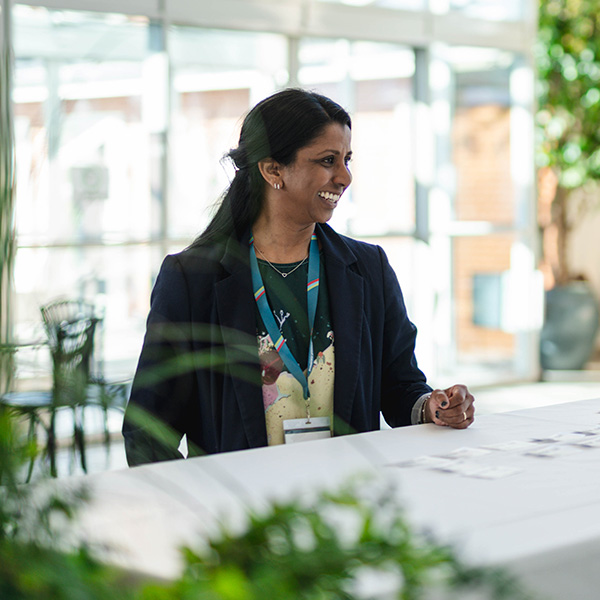Diversity Leadership – DEI
Cultivate diversity, equity, and inclusion in your workplace
Diversity leadership – DEI – is about building an inclusive workplace where every individual is valued, regardless of background, age, ethnicity, sexual orientation, religious beliefs, or gender. An inclusive culture provides a strong foundation for both psychological safety and productivity.
Tackle unconscious bias and foster a stronger community
Through diversity leadership, your organisation can actively strive to include everyone in both professional and social communities – on both a conscious and unconscious level. Consciously, by having clear values that are lived out in practice; unconsciously, by addressing issues such as unconscious bias. But what is unconscious bias? Simply put, as humans, we tend to treat people who resemble ourselves more favourably than others. This gives those individuals an advantage, as they indirectly gain more confidence and thereby feel free to express themselves more fully. When you work actively with DEI and unconscious bias, your role is to broaden that acceptance and confidence, ensuring it lifts all employees – not just a particular type or group.
What does DEI mean?
Diversity
D stands for diversity. Diversity means that your organisation welcomes customers, citizens, and employees of all backgrounds, ages, ethnicities, sexual orientations, religious beliefs, and genders.
Equity
E stands for equity. In this context, equity means providing everyone with the support they need to achieve the same goal or deliver the same level of performance in their work.
Inclusion
I stands for inclusion. Inclusion means that each person feels free and unafraid to participate just as they are.

Be mindful of everyday subtle remarks
DEI also involves recognising microaggressions – comments or behaviours that may not be overtly offensive, but which stem from habits or jargon commonly used in the workplace. These are everyday remarks that subtly stereotype and reveal biases against specific groups of employees.
For example, our perceptions of gender can reflect underlying assumptions and either positive or negative discrimination, gender roles, or stereotypes. Take a comment like, “There are no women at the meeting, so who’ll make the coffee?”. Remarks like this generalise individuals based on their gender and subtly exclude affected colleagues, fostering a culture in which microaggressions are tolerated. That’s why the first step in working with DEI is to become aware of the biases you may have as a leader – or those embedded in your organisational culture.
By valuing diversity, equity, and inclusion, your workplace can prevent microaggressions from escalating into genuinely offensive behaviours. At the same time, you lay the groundwork for an inclusive culture, where everyone feels welcomed – both consciously and unconsciously – and every individual is recognised for their competencies, social skills, and preferences, free from predeterminations.
Why is it important to embed DEI in the workplace culture?
When you, as a leader, choose to embrace DEI as part of your organisational culture, you unlock a host of benefits. Psychological safety is fostered when all employees feel included, which, in turn, boosts overall performance. Staff become more productive, are better at sharing knowledge, and feel comfortable discussing mistakes, paving the way for continual improvement. Moreover, diversity in the workplace often leads to better end results, as a range of perspectives sheds light on all the scenarios your organisation may face, creating fertile ground for innovation, development, and the delivery of better products or services.
With DEI embedded in your organisation or company culture, you also establish a strong basis for recruiting new employees. By actively choosing to create diversity, equity, and inclusion in your recruitment process, the diversity that emerges within your workplace becomes attractive to potential talent seeking to join a truly modern organisation.

Organisations with strong cultural and ethnic diversity are 36% more likely to outperform those with low diversity among staff.

Become a certified DEI Leader
At Human House, we provide advisory services on DEI at a preventative level, focusing on raising awareness of how you approach new people and become more inclusive towards everyone. Our training in diversity, equity, and inclusion empowers you to become a DEI leader – proactively shaping a diverse workplace culture.
We offer bias training, enabling you to recognise your own biases and simplified assumptions about others based on age, ethnicity, sexual orientation, religious beliefs, or gender.
We equip you to work with behavioural regulation among staff – enabling employees to challenge colleagues’ microaggressions in a constructive manner that does not single anyone out.
